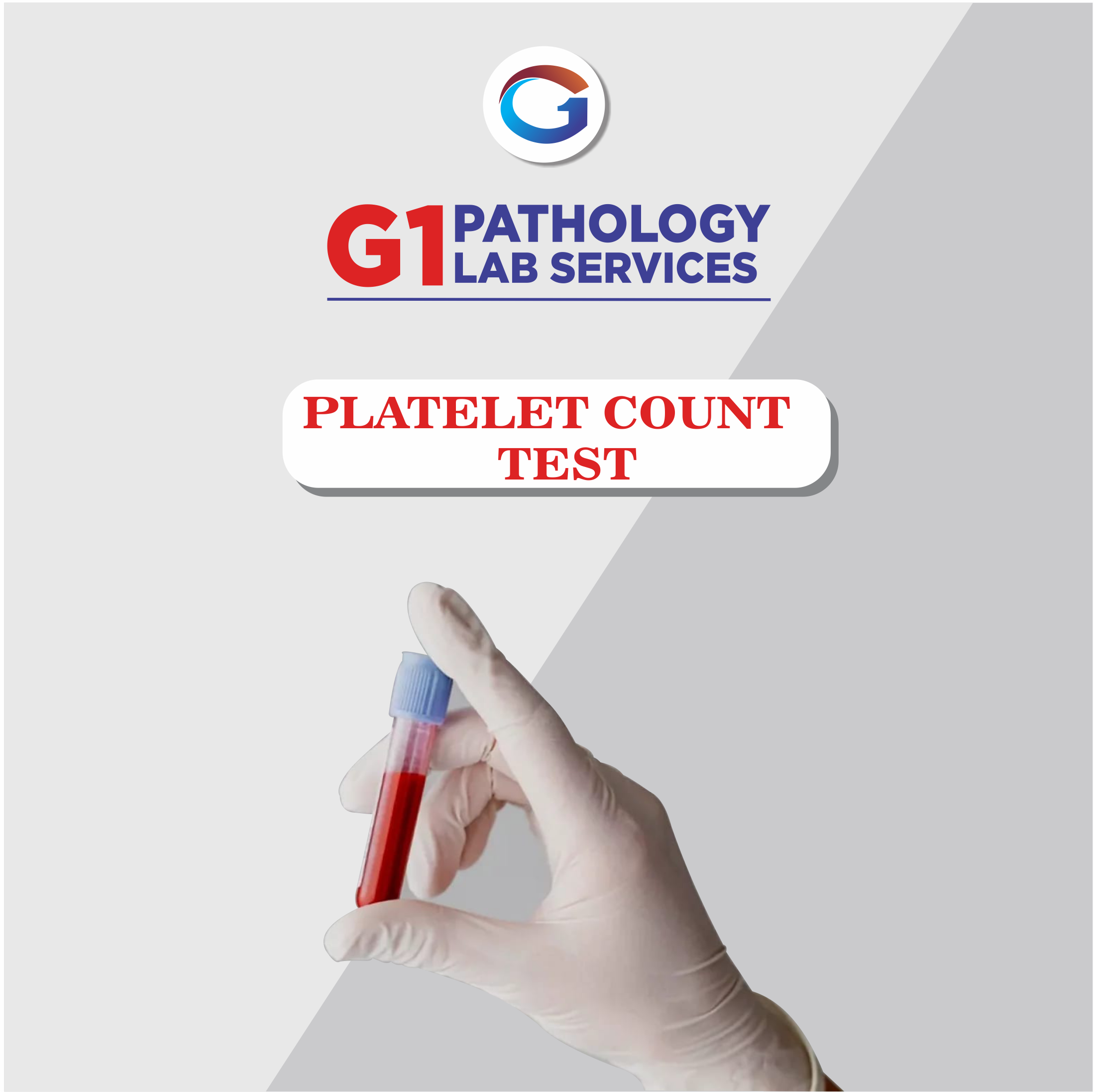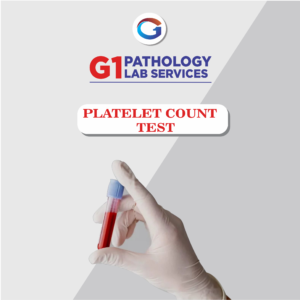The Platelet Count test determines the number of platelets in a sample of your blood as part of a health examination. It is used for diagnosing or monitoring conditions that affect the number of platelets, such as a bleeding disorder, bone marrow disease or other underlying conditions. Platelets, also known as thrombocytes, are tiny blood cells that aid in the clotting of blood. The process of clotting helps you stop bleeding after an injury. Platelet testing comes under two categories, Platelet count tests and Platelet function tests. A Platelet count test is a lab test that determines the number of platelets in the blood. Thrombocytopenia is a term that denotes a platelet count that is lower than average. This disease might cause you to bleed excessively after a cut or any other bleeding incident. On the other hand, Thrombocytosis is defined as a condition where the platelet count is higher than usual. This might cause your blood to clot more than it should; as blood clots can restrict blood flow, they can be hazardous. Platelets are blood components that aid in clotting. In their inactive state, they form little plates. When a blood vessel is injured, it will send out a signal. Platelets will respond by moving to the location and changing into their active shape. The platelet count in a standard blood sample varies between 150,000 and 450,000 platelets per microliter. Thrombocytosis is a state of having more than 450,000 platelets. On the other hand, Thrombocytopenia is the state of having less than 150,000 platelets. A regular blood test termed a complete blood count (CBC) will determine the platelet count in the blood. As stated before, Thrombocytosis is the medical word for having too many platelets. There are two types. Primary or Essential Thrombocytosis, where an increase in platelets is caused by abnormal cells in the bone marrow, but the origin is unknown. Secondary Thrombocytosis is the same as Primary Thrombocytosis. The slight difference is that it can be caused by a chronic illness or diseases and conditions like anemia, cancer, inflammation or infection. Symptoms include spontaneous blood clots in the legs and arms, leading to a heart attack or stroke if left untreated. In extreme scenarios, the individual may need plateletpheresis treatment. The platelet count is reduced by extracting the blood, isolating the platelets and restoring the red blood cells to the body. The symptoms of secondary Thrombocytosis are generally based on the underlying disease. For example, if an individual has an infection or anemia, they treat the condition or anemia and their platelet count drops. Thrombocytopenia is a state in which the platelets are insufficient. Sustaining injuries is typical and bleeding from the gums, nose or GI tract is common. When anything prevents the body from generating platelets, the platelet count declines. Blood clots, heart attacks or strokes can occur if too many platelets, too few platelets or improperly functioning platelets are present. So when there’s a familial link, it’s a good idea to consult the doctor. The Platelet Count test will help the doctor diagnose when an individual has episodes of unexplained or extended bleeding or other symptoms related to a platelet problem.
Shopping Cart







Reviews
There are no reviews yet.